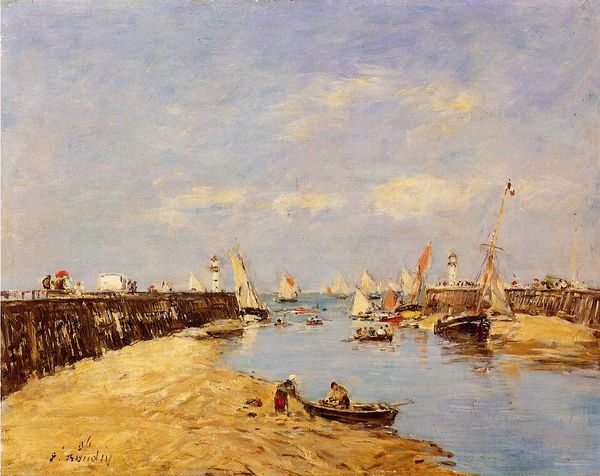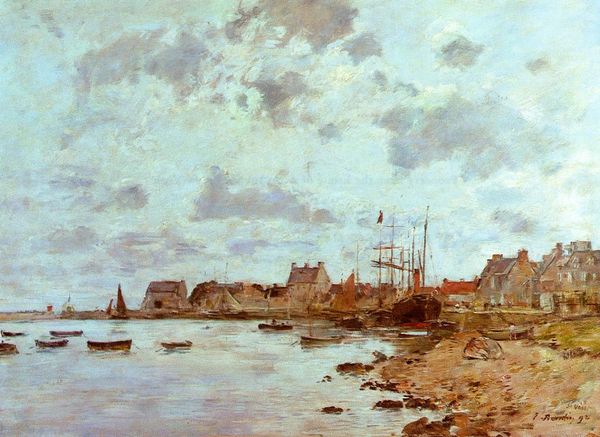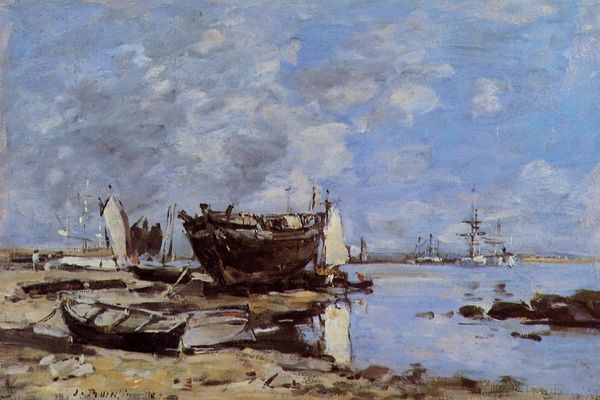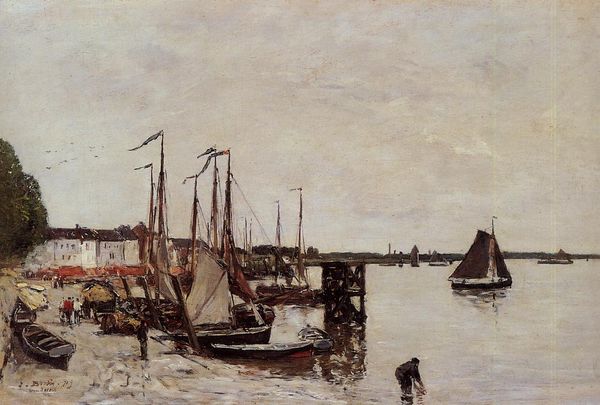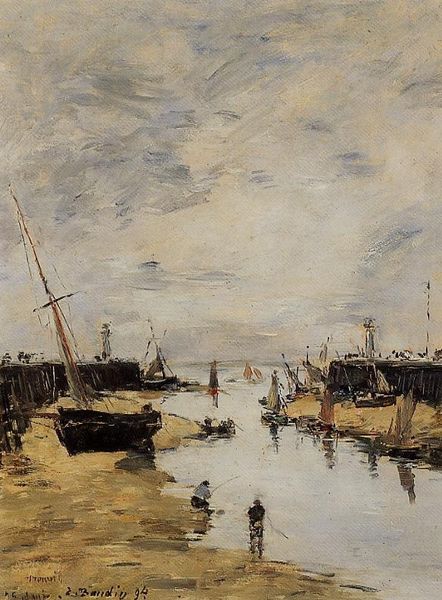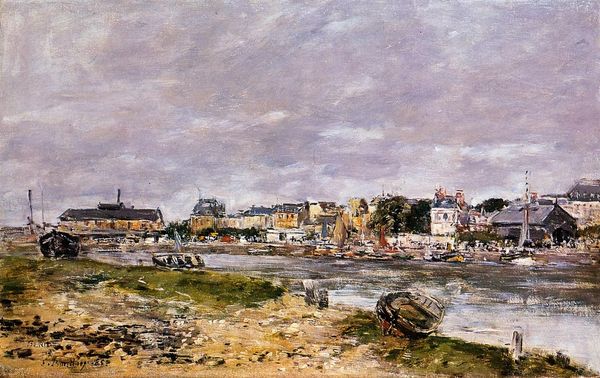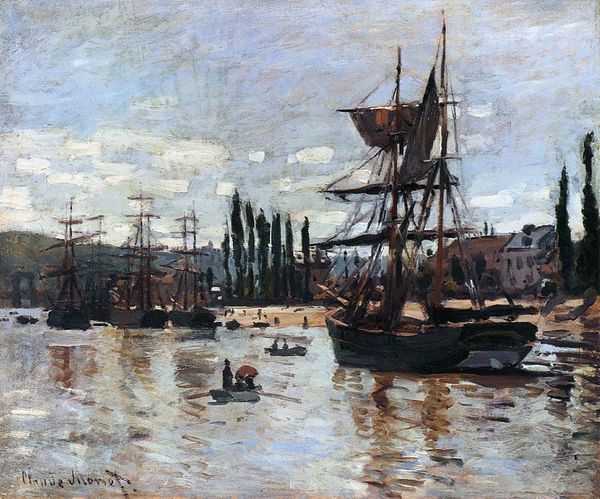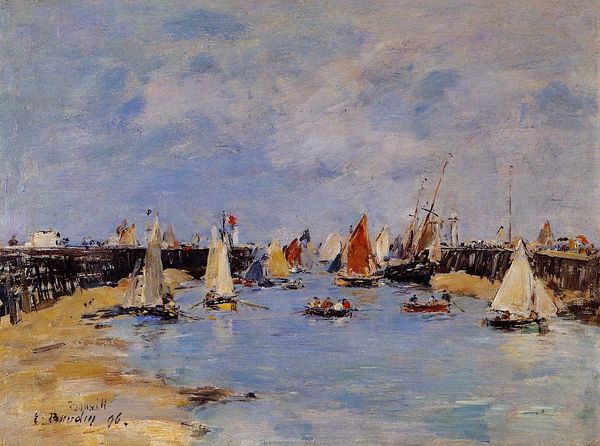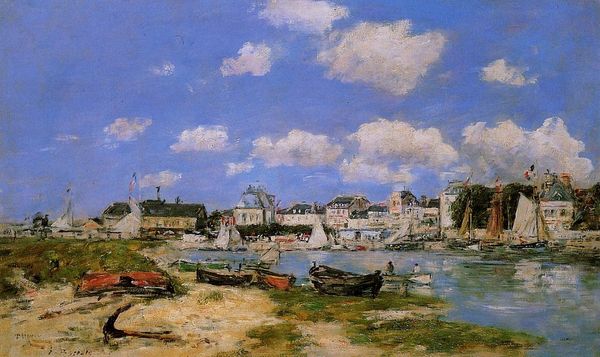
painting, oil-paint
#
boat
#
sky
#
ship
#
painting
#
impressionism
#
impressionist painting style
#
oil-paint
#
vehicle
#
landscape
#
impressionist landscape
#
oil painting
#
seascape
#
france
#
water
#
cityscape
Copyright: Public domain
Curator: Eugène Boudin's "Trouville, the Inner Port, Low Tide," created in 1881, depicts a bustling harbor at its quietest moment, all captured in oil paint. Editor: The overall feeling, for me, is almost melancholy. The subdued palette, all greys and blues, makes me think of the lull after a storm. Or perhaps just a quiet observation on the transient nature of the sea, and life generally! Curator: Let’s think about what we see, the material realities here. The low tide has exposed the muddy flats of the harbor, reflecting the soft light, which suggests attention to maritime commerce. Look closely; the moored boats indicate infrastructure supporting the fishing and shipping industry vital to Trouville. Editor: That’s true. But it feels as much about light and atmosphere as about industry. Boudin’s brushstrokes seem so free, capturing the fleeting effects of light on water and sky. It reminds me of childhood trips to the coast; the damp air, the smell of the sea… Curator: And look at how the painting's surface is worked, evidence of facture. He wasn't trying to create an illusion of reality, rather revealing the constructed nature of the image, emphasizing painting as a practice involving skilled labour and specific materials like oil paint. Editor: True. But also consider the boats; those upright masts make such striking vertical statements against all those horizontal planes, and the composition allows for one’s eyes to float over to the buildings on the harbor's edge. Boudin isn’t afraid of blurring lines, or dissolving hard edges, creating a very cohesive pictorial sensation. Curator: Precisely. We can almost discern a class dimension reflected in the work, revealing the labour and lived experience dependent upon these landscapes and seascapes in a capitalist world. Editor: Boudin captures an essence; it’s more about that emotional connection than accurate detail, something quite palpable! Curator: Reflecting on Boudin’s labor is fascinating, a reminder that his paintings do more than document locations, and embody the relationship between creative action and production. Editor: In this evocative, rather melancholic scene, Boudin captured a transient moment. And even while we may interpret labor and historical context, he manages to transcend his location.
Comments
No comments
Be the first to comment and join the conversation on the ultimate creative platform.
